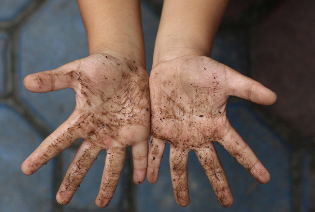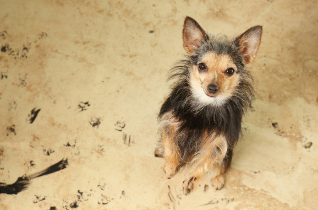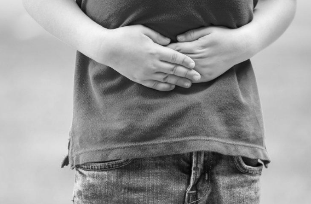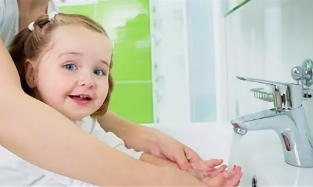Helminthic infestation in children – one of the most common and most at risk for diseases. Worms in children is not only provoke an inadequate intake of nutrients in the body, but also the cause of allergic reactions, chronic intoxication, immune deficiency, diseases and injuries of the gastro-intestinal tract. Signs of parasitosis do not develop immediately, for a longer time, the disease may be asymptomatic or unexpressed clinical picture and determined only in laboratory analyses.

Incidence and types of worms
It is believed that Helminthiasis, infection with worms is a disease that is more related to the people from social classes below the average, live in unsanitary conditions, often in contact with infected animals or soil. However, according to the statistics, only in the European countries found helminths in the study every third patient.
In nature, there are more than 300 species of worms, more than 70 species, widespread in Russia, and the others penetrate into the human body to travel to exotic countries. Among all types of worms-parasites to exist in the human body, there are three groups:
- Nematodes, which are to a round-ranking helminths, some of the most common parasites in children (pinworm, whip worms, trichinae, ascarids);
- Band (flat) worms of the cestode (various types of tape worms, lentetsov and Echinococcus);
- Parasites-tape-worms or trematode, the cause of opistorhoza, fascioliasis, chistosos, lung Fluke collected disease, etc.
In most cases, worms, and multiply in the intestine, but the eggs and larvae can be written with the blood stream into various organs of the body. Most often, the surrounding organs of the stomach suffering-intestinal tract: the liver, the gallbladder, but the parasites can be populated muscle tissue, lungs, brain.

Worm Diseases: Routes Of Infection
Ways of infection with worms are dependent on the characteristics of your development cycle. For some groups of worms, man is the most important "host", in whose body they live and breed, for others – funds member. In some cases, parasites, the ripening of the eggs in the soil or other conditions. But the basic rules for the protection against infection Hygiene, a condition which is not performed in the age of the child.
The age of the children – period, if a stable immunity has not yet been formed, increases significantly the probability of infection parasitosis. The desire, the taste, multiple contacts with the soil, Sand, objects, increase the likelihood of penetration of eggs of helminths in the organism of the child.
The most common worms – pinworms and roundworms – transmitted on unwashed hands can remain on objects of daily use (door handles), to fall to the inside of the organism with the food (poorly washed berries, herbs, vegetables). There is also the likelihood of the spread of worms in contact with an infected Person or animal, or the existence in the immediate vicinity with you.
Pinworms are some of the worms, stimulating reinvasion in: itching, causing the female pinworms in the process of laying eggs outside of the Anus, forcing him to touch, RUB, scrape, distribute the irritated surface, and the eggs of the parasites on the bottom, bed linen, clothes, objects, surfaces. In the case of repeated ingestion of eggs, which occurs in the Hand or the bed, reinvasion, self-infection of the patient. The primary infection of children it occurs most frequently in children's institutions, in the squares, in places of a mass congestion of children.
What are the factors that increase the risk of infection-ranking helminths?
- The non-compliance with Hygiene of the hands: Pass wash hands after returning from the road, the guests, the toilet, before every meal.
- Biting nails, sucking their toes, to keep the mouth different objects (pencils, pens, toys, etc.).
- The presence of Pets, a visit to the street: even with timely anthelmintic therapy dogs and cats can be taken of the eggs to distribute the worm, from the street on its hind legs, wool.
- Non-compliance with the requirements for the processing of vegetables, fruits, berries, vegetables before consumption.
- Poor Hygiene in the house: the wearing of street shoes, the delay in the washing of floors, etc.

Worms in children: different symptoms, and the treatment of Helminthiasis
Many types of parasites for a long time did not promote the formation of open clinical eliminare: the goal of the parasite exist, in order not to be noticed host-carrier. Therefore, light symptoms of Helminthiasis can be noted only in those cases when the infection is Plural (originally or as a result of the long latency period) and/or the child's immunity is lowered, there are co-morbidities, the background of the Helminthiasis is more pronounced manifested. A separate Situation – the infection with the exotic species of parasites, caused a strong reaction of the body.
Common signs of Helminthiasis in children:
- increased appetite without weight gain;
- increased flow of saliva;
- Symptoms of intestinal dyspepsia, flatulence, unstable stool, nausea, pain in the stomach, the right hypochondrium, bowel spasms;
- Dizziness, headache, increased fatigue;
- the tendency to allergic reactions, which has not been observed, or the acute symptoms of Allergy;
- Sensitivity, irritability, sleep disorders, attention, memory, connected with noise products of the vital activity of the worms;
- Hair breakage, hair loss, bundle defects in the development of iron deficiency, vitamin deficiency, and;
- frequent inflammation in the nasopharynx (Sinusitis, Sinusitis, Pharyngitis, etc.), the sex organs, particularly in girls because of the anatomic proximity of the Vagina and Anus.
In the case of longer Helminthiasis in children, there is a delay of age-related standards in the growth, weight, development, activities, and violations of disorders of the gastro-intestinal tract, severe intoxication symptoms, anemia, allergies, frequent infections of the respiratory tract bacterial and viral etiologies, neurological abnormalities.
The first symptoms usually occur 2-4 weeks after the occurrence of the eggs of worms in the body. They differ in dependence of the number of parasites, the level of the defence force and the health condition of the child, as well as the types of worms. So, pinworms cause nocturnal itching in the Anus, what sleep disorders promotes. In the case of toxocarosis, the characterizing features of cough without signs of respiratory disease, fever, most probably, asthma attacks and allergic reactions.
The common assumption that bruxism puts the gnashing of the teeth during sleep – a sign for the presence of worms in the body, reflected by the medical professionals. The phenomenon of bruxism which is connected with the peculiarities of the human nervous system. Although the worms, especially pinworms that can disturb sleep and contribute to neurotization of the child, bruxism is no evidence of parasitic infestation. The treatment of this phenomenon involved neurologists and dentists.
In the case of longer Helminthiasis in all people, the clinical picture of poisoning of the body develops.

Diagnosis of Helminthiasis
In most cases Helminthiasis in children Kala diagnosed as a result of annual preventive investigations on the eggs of the worm. However, this is not the most reliable method: in the presence of symptoms and a negative analysis is to bear in mind that not all types of worms can be determined in a similar manner. Those species that can lay eggs, can also be trying to avoid detection in the laboratory, since the periodicity of the reproduction may not match the time of the analysis. There are also known cases where in the body is one or more of the same-sex animals are not capable of procreation, but it is harmful for the entire life cycle.
In the case of negative analyses of faeces the implementation of the re-examination after 2-3 weeks is recommended. In the list of preventive research, the analysis covers the screw on the presence of eggs, endless and scraping on enterobiasis. Suspected to be the presence of worms can also according to the results of the blood tests: high levels of eosinophils in combination with reduced haemoglobin in the majority of cases, implies the presence of the parasites in the body.
To clarify the diagnosis and biological investigations of the Sputum, bile, urine, coprogram fecal masses are applied.
To clarify the diagnosis in cases of suspected Echinococcus organs Peritoneum ultrasound and/or x-ray method. Opisthorchiasis is diagnosed with the help of the analyses of the intestinal contents, and duodenal Intubation.
You clarify the nature of the parasites, and the possible damage to the body, the immunological research help. After the exact diagnosis of the selected method of therapy.
Drug methods for the treatment of Helminthiasis in children
Therapy of helminthoses is based on two directions: the liberation of the parasites and detoxification of the body, the reduction or leveling of the damage, the existing infestation.
To reduce the severity of symptoms of intoxication vitamin supplements (B, C), iron, Vitamin appointed-Mineral complexes, glucose, rate infusions gemodeza, and the like In some cases, the use of diuretics, and antihistamines. With the defeat of the heart muscle, liver tissue, hormonal agents can be used.
Maintenance therapy with chelators Outputting waste administered products from the gastro-intestinal-parasites, enzyme preparations to improve the processes of digestion and the functioning of the organs, etc.
All of helminthoses extremely not of the broad actions in the case of children recommended for the application of the preparations. Drugs that must be treated to the death of the parasite, its effects on the human organism, therefore, the selection of the drug and the dosage with care.
Homemade and traditional methods of getting rid of tape worms is not recommended absolutely due to a lack of evidence and to measure the possibilities of the dosage and the likely impact on the child's body.
Principles of therapy of helminthoses
In most cases, in the treatment of Helminthiasis in the case of a member of the family, treatment should at all, in this territory of life in adults and children. This is true not only for highly-contagious askaridoza, but also on other types of Helminthiasis. Medicines for every member of the family, the physician selects according to the age and state of health.
If the home has Pets, you are mandatory to be held antihelminthic treatment, regardless of the time after the result of the prophylaxis.
In the room where the child lives is ill, the daily hygienic cleaning, preferably at the time of the treatment, remove all carpets, stuffed animals, blankets. To change the bedding and underwear, personal towels, as often as possible (Slip – twice a day), after washing all the bed linen needs to be carefully ironed.

You must comply with the rules of Hygiene: wash hands after each visit to the washroom, returning from the road, use only personal towels, in short, their nails cut. Without Compliance to therapy can be ineffective due to the constant presence of infection sources in the environment of the patient.
Prophylaxis of infection with worms
To obtain the measures of prevention in the first place, the rules of personal Hygiene. Most commonly, eggs are an endless screw and open into the oral cavity with the hands, and to prevent washing of hands helps, most cases of infections.
Include other preventive measures, as well:
- a thorough (not less than 2-3 minutes under running water) wash berries, vegetables, leafy vegetables, before you eat, if you intend to use in the raw state;
- Long-time heat treatment of river fish (40-60 minutes) prior to consumption;
- timely preventive anthelmintic therapy in domestic animals;
- General cleanliness in the house, in accordance with the sanitary-and-hygienic standards.





































